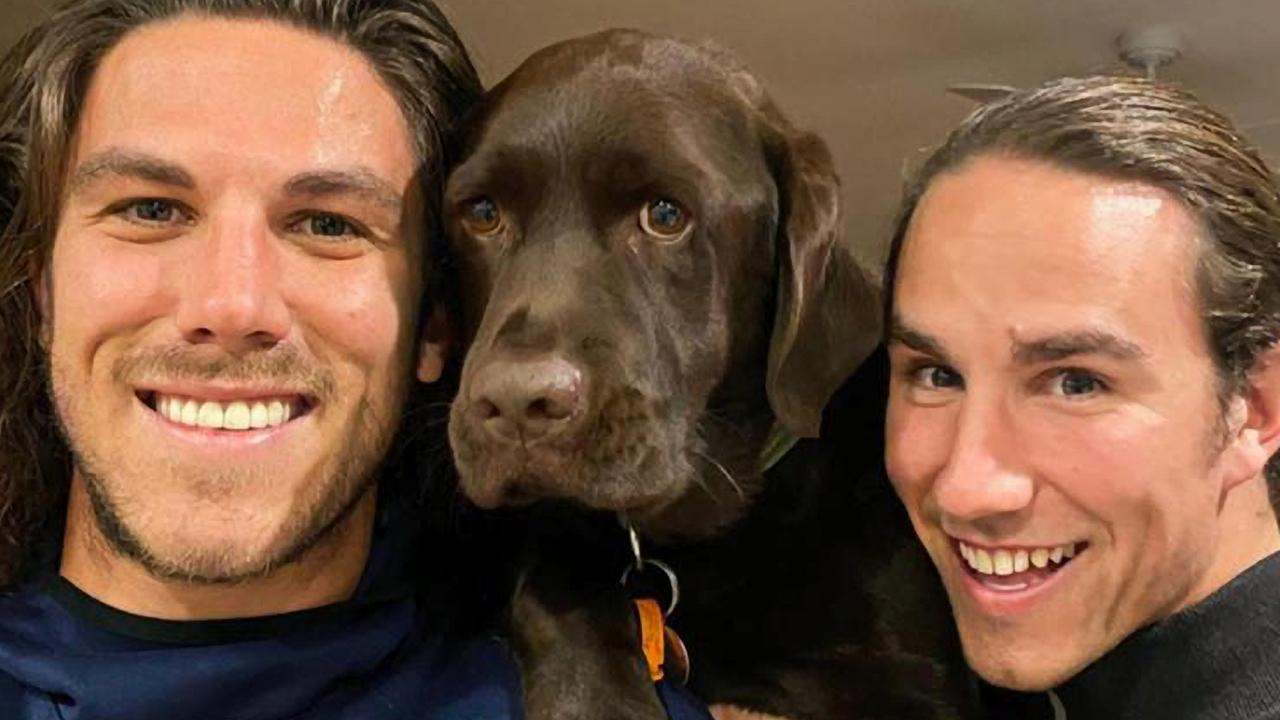Mexico’s new ‘El Chapo’ makes Australia top target for ice trade with help of outlaw bikie gangs
MEXICO’S deadliest drug lord has ordered his cartel to target Australia, forge closer ties with outlaw bikie gangs and open regional meth labs in a move that has already pushed ice use in this country to the second highest level in the world.
Crime in Focus
Don't miss out on the headlines from Crime in Focus. Followed categories will be added to My News.
IN the directorate of intelligence at the headquarters of the National Colombian Police in Bogota, a senior officer points to a map.
“Yes, your problems start from here,” the Colombian officer says, pointing to a giant nondescript tract of jungle along a craggy line of a river that constitutes the border between Colombia and Ecuador.
“But for Australia your problem is controlled from here,” he adds, sweeping his finger four countries and 4000km away to Mexico and specifically Jalisco.
“This is where your fight has to be and from where you will stop the drugs coming to your country.”
Jalisco in Mexico’s central west has emerged over the past three years as the ground zero of one of the most powerful drug cartels in the world, which is now listed by the Australian Federal Police as centrally behind — through its trafficking of drugs — making Australia the second highest user of methamphetamine in the OECD world.
It’s a dubious honour up there with Australia being one of the biggest buyers and users per capita of cocaine on the planet.
And while there are numerous players in between Jalisco and the pills being sold in pubs and nightclubs across our cities — including the principle distributors within Australia’s network of Outlaw Motorcycle Gangs (OMCG) and West African gangs — it starts here, in Mexico at the direction of a former policeman nicknamed ‘El Mencho’, the next generation narco that the AFP lists as the man that specifically has Australia firmly in his criminal sights, to the point that an estimated 75 per cent of meth coming into this country is suspected to now be sourced, controlled or influenced via Mexico.

“Mexico has been a weakness for us in the past as we didn’t have a presence there but since (October 2017) last year that changed when we opened up a post there as we saw what was happening,” a senior AFP law enforcer said.
“The comprehensive counter drug strategy has three pillars, harm reduction, supply reduction and demand reduction. Law enforcement is about supply reduction … that’s what we are responding to and working closely with overseas authorities, like in Mexico with the Mexican Federal Police, to counter the supply of cocaine and meth (methamphetamine). It’s complex. For us critically it’s about sharing intelligence on the organised crime level to disrupt their criminal activities and that’s already paying off.”
FOLLOW: True Crime Australia on Facebook and Twitter

Just two years ago, the AFP’s target was the Sinaloa cartel as the principle wholesale supplier of drugs to Australia. Established in the 1980s, the cartel was listed by the US Intelligence Community, a federation of 16 government agencies tasked with national security, as the single most powerful drug trafficking group in the world. It was shipping cocaine and meth by the tonne mostly to the US, then branched out to other countries, including Australia, as well as trafficking other drugs including the heroin-like prescription drug fentanyl.
Its leader Joaquin ‘El Chapo’ Guzman, captured in a shootout in 2016 and deported to the US a year later, was already a target for Australian authorities who suspected he was controlling 60 per cent of the national drugs trade here prior to his last arrest.
He had directed operations targeting the country, with a kilo of coke retailing on Australian streets for up to $US180,000 (about $250,000 at today’s exchange rate). For context, the same amount would attract less than $US2500 in his country. Both Sinaloa and its linked San Salvador-based Mara Salvatrucha cartel (aka MS-13) first emerged in Australia in 2014 as they sought to establish direct links with OMCGs here.
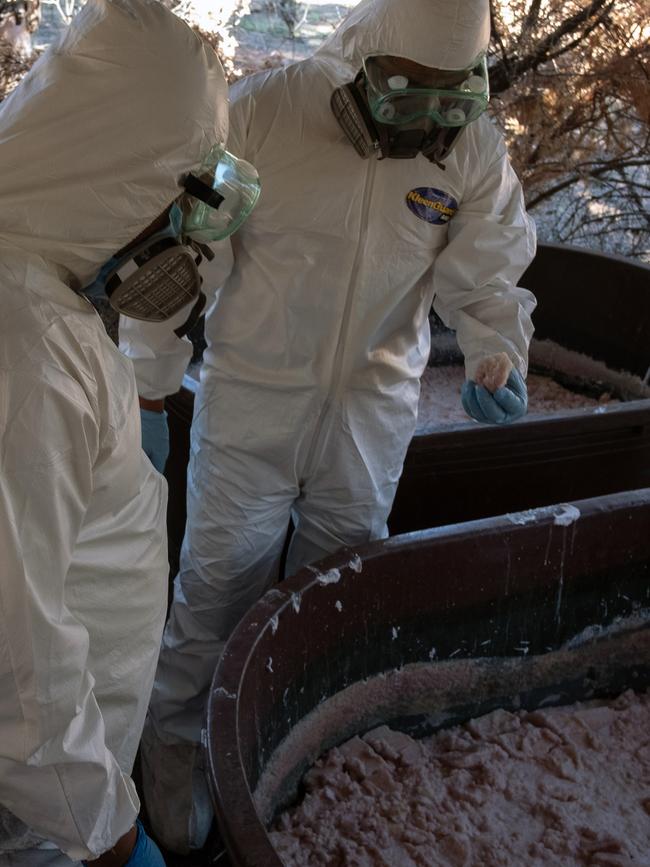
True Crime Australia: Drug crop mystery ends in murder
OMCGs: It’s a wild ride on outlaw bikie runs
According to Australian intelligence, as gathered by both Mexican and Colombian counterparts, much of Guzman’s cocaine was being harvested from huge coca plantations in cleared jungles in Colombia, and particularly in the largely uninhabitable Ecuadorean border, via local cartels there, such as the Clan del Golfo (aka Clan Usuga), and militant former guerillas Los Pelusos and ELN (National Liberation Army). It was then moved via third countries to Mexico, Honduras, Guatemala and San Salvador.
The trade was largely just cocaine, but then the Sinaloa cartel forged links with China, one of the world’s largest manufacturers of pseudoephedrine and ephedrine, used in common pharmaceuticals but also the basis of methamphetamine, aka ice and speed.
The appetite for meth became so strong, and the cartel’s meth distribution was so huge, it began imports also from India. By 2016, 90 per cent of meth consumed in the US was sourced through Mexico, with Sinaloa controlling the entire line from manufacture to distribution, including on commercial ships and passenger cruises and hidden in liquid or solid form.
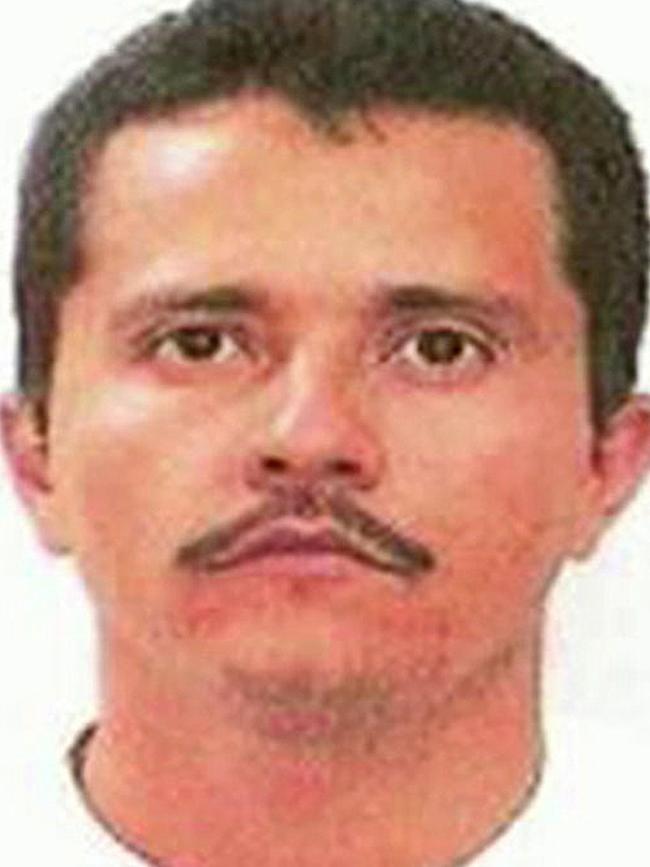
The ridiculous wealth generated, counted in billions of dollars not millions, led to divisions and an underling splinter group formally known as Milenio but emerging as Cartel Jalisco Nueva Generacion (Jalisco New Generation Cartel) or CJNG and its leader the former cop Ruben Nemesio Oseguera Cervantes, aka El Mencho.
As a former police officer he knew the value on having law enforcement on side and set about buying the police who were on Sinaloa’s payroll, and CJNG grew from about 2010.
Intelligence suspects one in five officers were in some form of corrupt collaboration and being paid well for it by CJNG, with others turning a blind eye.
Elements of the judiciary were also then put on the cartel’s payroll. The group burgeoned, particularly after Guzman’s capture which led to a power vacuum and all-out war with other cartels and law enforcement, culminating to a record criminal-related death toll in Mexico last year.
Much of the more than 20,000 murders in that year were chalked up to turf disputes between gangs.

Such is CJNG’s indiscriminate wanton brutality however, they have been likened to terror group Islamic State (ISIS).
Between them Sinaloa, CJNG, Los Zetas (made up of ex special forces soldiers), El Gulfo Cartel (Mexico) and the Juarez Cartel, as well as others, carved up Mexico and through that drugs distribution to the world.
But DEA and Mexican authorities say the growth of CJNG was in part down to Australia.
Last week US prosecutors publicly cited CJNG’s influence as far away as Australia as US Attorney-General Jess Sessions issued 15 indictments against 45 CJNG figures; Mencho already has a US$10 million bounty on his head.
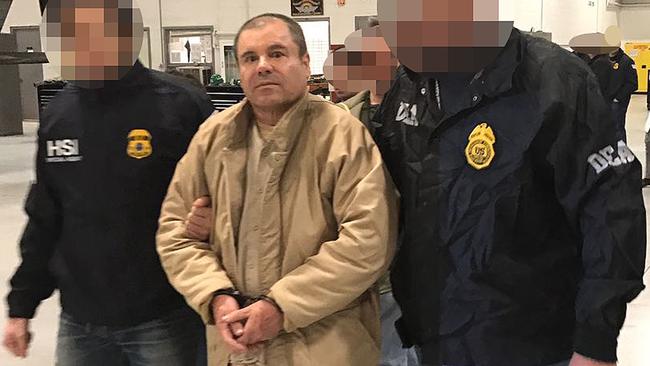
Australian police said El Chapo had been replaced by the 52-year-old El Mencho as their target, with the cartel boss and his new generation of narcos stunning authorities with the speed with which they have risen over Sinaloa in the trafficking of drugs to Australia.
Their estimated worth is more than $20 billion and their brutality knows no bounds — from taping dynamite to victims to beheadings and torture and indiscriminate warning killings.
Intelligence points to Mexican drug trafficking through Manzanillo and Lazaro Cardenas, both busy ports bringing in the precursors and pushing out the meth.
Unlike with the cocaine trade, the cartel does not have to share profits with the Colombians, and Colombians who have visited counterparts for negotiations rarely return home from their business trips.
As one police officer remarked, CJNG no longer needs them.

Australia has had direct intelligence from the Drug Enforcement Agency (DEA) in the US that El Mencho has specifically declared Australia a primary target, since the profit margins are four times larger than what he can get from the US market.
He also decided to traffic more to Australia as he saw the US focus against his nemesis, which allowed him to accumulate wealth and control. Mexico, in its war on drugs partly funded by the US, focused so much on Chapo that Mencho, the son of poor avocado farmers, rose quickly, firstly just through Asia, before switching to the US, by which time it was too late for authorities there.
The cartel now has a noted presence in the Philippines, specifically to traffic meth to Australia, thereby reducing the route detection risk of having to ship all the way from Mexico. It has also taken over the precursor contacts in China and India.

Mexican and Australian police talk of “infiltration” but that is highly unlikely. Even the Americans have largely failed to turn informants who face the twin threats of financial cut off and death for detected betrayal.
But the opening of the AFP bureau has helped. Mexico-US intelligence shared with Australia has led to at least five separate multi-kilo and tonne seizures and arrests in Queensland, Sydney and Melbourne of meth and cocaine worth hundreds of millions of dollars.
Meth seizures in 2017/18 nationally has incredibly tripled since last year to 3762kgs.
“Already this collaboration is producing significant results,” the AFP annual report issued this week concluded.
Sources confirmed that, critically, the intelligence had turned up the names of OMCG and senior figures operating as national drug distributors and money launderers here, directly linked to Mencho dispatched hauls.
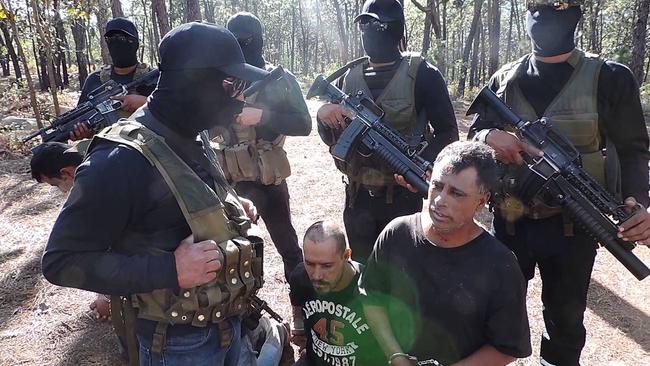
Such is CJNG’s power, it has a military wing armed with RPGs (rocket-propelled grenade), which the cartel used to bring down a military chopper in Mexico in 2015 and also slaughter a dozen police in a convoy.
Ironically Sinaloa and CJNG agreed to an uneasy peace at one stage, with Sinaloa giving up trade routes and markets, but that ended with El Chapo’s ultimate arrest (he was arrested in 2015 but escaped to be recaptured six months later).
From his suspected hide-out in the mountains of Michoacan, Mencho continues to co-ordinate drug movements to Australia, with police both in Mexico and Australia waiting for an opportunity to arrest.
Originally published as Mexico’s new ‘El Chapo’ makes Australia top target for ice trade with help of outlaw bikie gangs


